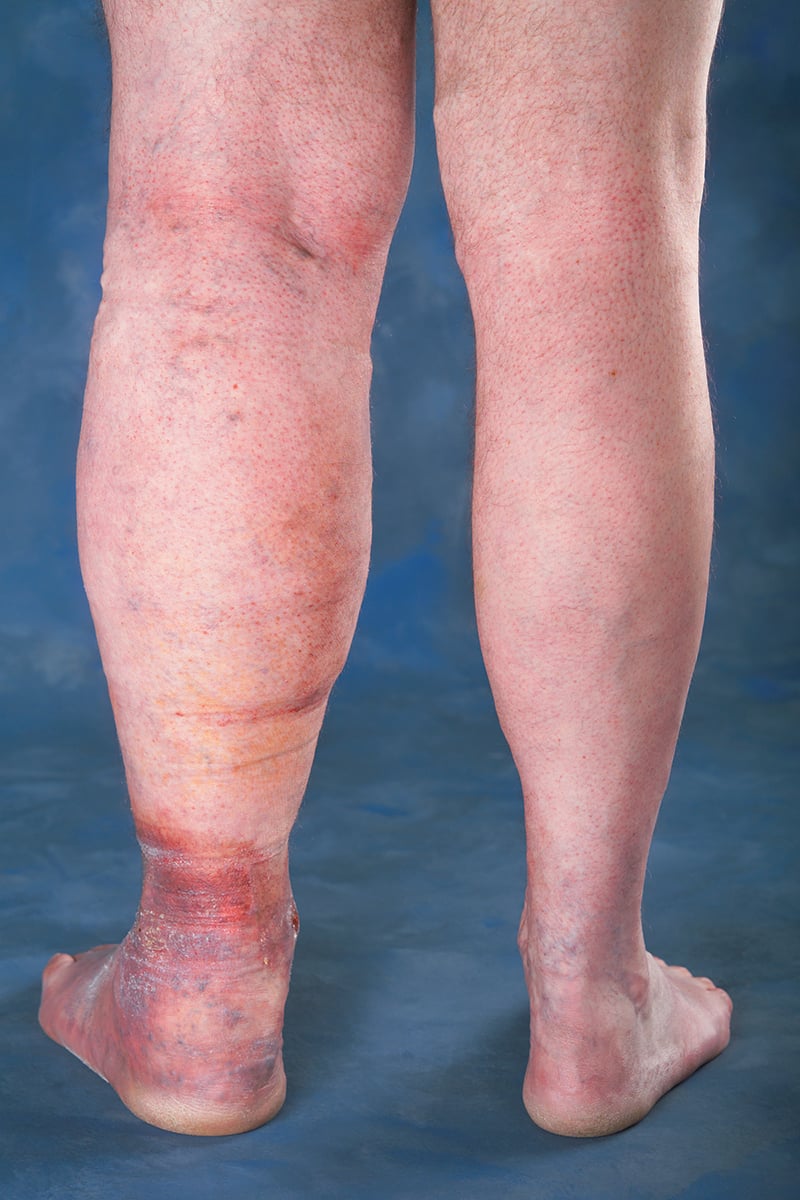Unlike an acute clot, a chronic clot is defined as a blood clot in a vein that has been present for over one month. Generally, an acute clot has been identified and treated with blood thinners, but the clot remains.
Over time a blood clot may dissolve or may harden and become a part of the lining of the vein - a type of scarring which means it is much less likely to break off. This process is assisted by a period of anticoagulant medication. The clot does however sometimes partially or fully block the vein, causing blood flow issues.
Nine out of ten patients who are diagnosed with a large acute clot will have some remaining abnormality in the affected vein/s after the clot has been treated, and around one in four patients will develop a condition known as 'Post-Thrombotic Syndrome' (PTS).
Post-thrombotic syndrome symptoms include:
- Pain in the affected limb
- Dilated veins on the limb
- Chronic swelling of the limb
- Skin discoloration
- Ulceration of the skin
Oedema or swelling is the most common manifestation occurring in approximately two-thirds of patients.
Post-thrombotic syndrome occurs in approximately 50 percent of patients within the first year following acute thrombosis, in spite of anticoagulation.
Severe post-thrombotic syndrome develops in 5 to 10 percent of patients.
Patient with chronic Post Thrombotic Syndrome suffering from dilated veins, swelling, skin discoloration and ulceration. © 2017 Medtronic Inc. used with permission.
Treatment
Non Surgical
Treatment is very similar to that for acute clots. Wearing graduated compression stockings on the affected limb will help to prevent or slow the development of PTS after a diagnosis of DVT.
Lifelong use of compression stockings is the mainstay of treatment for PTS.
Regular exercise helps with circulation.
Keeping the affected limb elevated as much as possible helps with swelling.
Surgical
Where a chronic clot is significantly narrowing, or blocking the vein, surgery may be appropriate to open up the vein. This is called 're-canalisation'. This has been a medical goal for a long time, but historical results have been disappointing. Recent advances in stent technology have enabled the development of stents specifically made for blocked abdominal veins.
There are now multiple worldwide “multi centre” trials underway to evaluate the long-term outcomes of this new technology. Dr Hagley was involved in one of the largest which is based at St Thomas’ Hospital, London. He has written papers and presented data on the topic at national and international meetings.
The 1 and 2 year data have shown excellent results for these patients who previously had no treatment options available. However, due to the cutting-edge nature of this technology we do not yet have long term data on the stent performance. As such this procedure is not for all patients with a chronic DVT and a detailed discussion with Dr Hagley to discuss the risks and benefits of the procedure is required. The procedure also may not always be possible, depending on the location and extent of the clot itself.
For more information on clots in general, see our page on acute clot.

